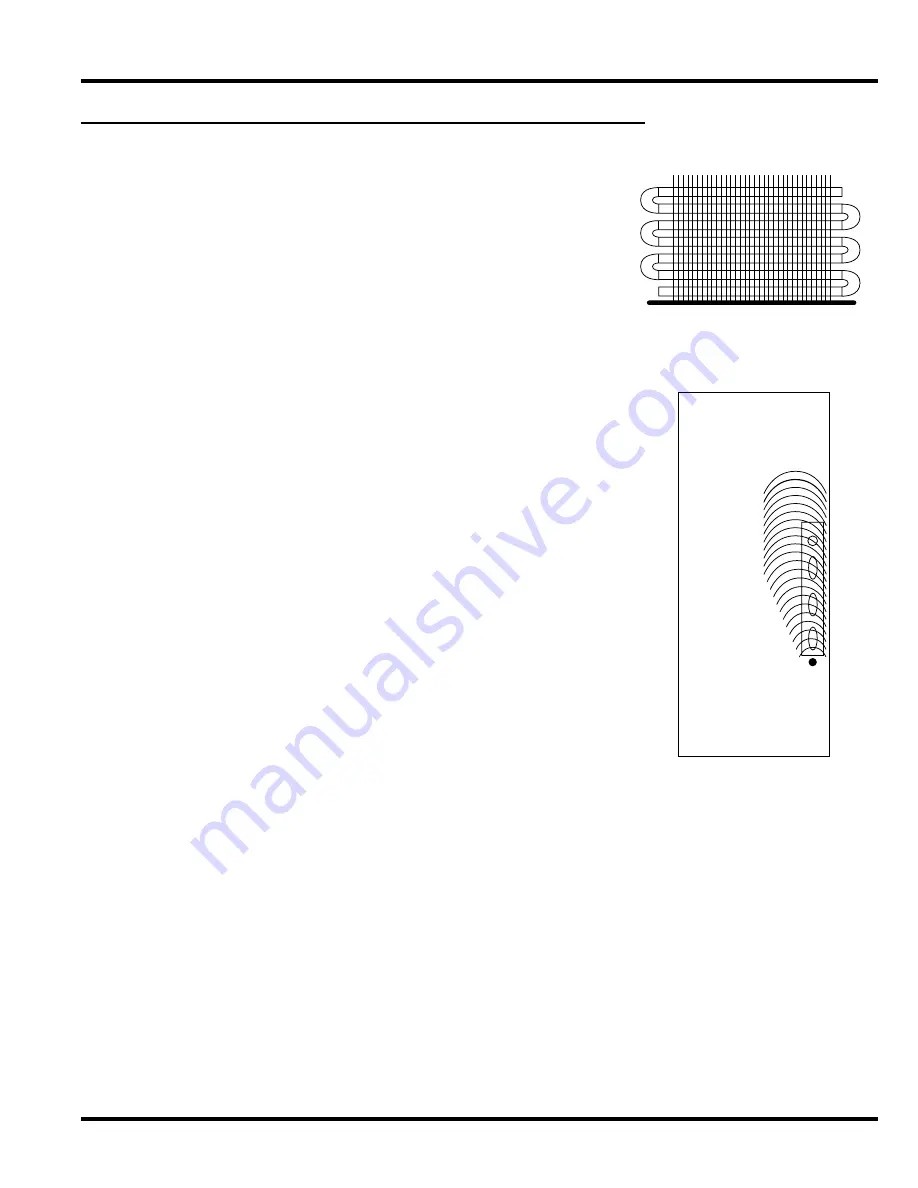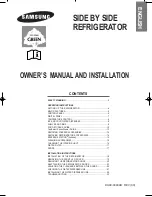
Page 1-3
s
eCTion
1 - P
roduCT
f
amiliarizaTion
Long Term Storage With a Higher Level of Performance
One of the most discouraging aspects of long term frozen food
storage is freezer burn. Freezer burn is most often the result of the
outer layers of the product thawing slightly and refreezing multiple
times. One of the most common causes of this thawing is the
defrost cycle needed for modern frost-free products.
When the system enters a defrost cycle, a heater is turned on to
warm the cooling coil in the freezer and melt any frost off from the
coil before it has the opportunity to affect the performance of the
system. While the coil is heating, it is not uncommon for the area
around the coil to heat enough to thaw the outer layer of product
and in-turn create freezer burn.
The Dacor Built-in Refrigerators minimize temperature swings
during defrost with two different features. One of the features is
Preemptive Adaptive Defrosting while the other is sub-cooling prior to
defrost.
Many manufacturers have added adaptive defrost to their product
lines. Adaptive defrost adapts to the use and environment of the
product and provides defrost cycles only when necessary. Not only
does this often result in fewer defrost cycles that could potentially
damage the freezer contents, it allows for energy saving.
Preemptive adaptive defrost takes this energy and food saving even
further by attempting to make sure that the defrost happens when
the refrigerator and freezer are not being used. In a normal adaptive
defrost, when it is time for a defrost, the defrost starts. This may
mean that a defrost cycle could start in the middle of preparing
dinner. At a time when refrigerator usage is at maximum, the system
is defrosting and cannot provide the cooling needed to maintain
optimum temperatures.
With a preemptive adaptive defrost, the system looks forward and
anticipates usage patterns to avoid defrosting at a time that may not
be best. The control tracks information about how the owners use
the refrigerator. The refrigerator has learned that between four and
seven in the afternoon there are a large number of door openings. A
large number of door openings translates to a high use period. If the
system identifies that a defrost is scheduled to happen around five-
thirty, it must make a decision. Either perform the defrost at 3 PM,
before the high use period, or wait until 8 PM after the high use period. The decision is made by the
controller and will be based on the time elapsed since the last defrost, the measured temperatures and
the usage since the last defrost. The end result is a defrost cycle happening when it least likely to affect
the life of the freezer contents.
Another way to prevent damaging temperature swings is to lower the temperature of the freezer
contents below normal before a defrost cycle is started. If the contents are cooler than normal before
the defrost cycle begins, there is less chance that the outer layers will thaw during the defrost cycle.
The Dacor Built-in Refrigerators look ahead and before starting defrost provides maximum cooling to
the freezer compartment. The result of the maximum cooling period is lower freezer temperature. With
a lower starting temperature, the defrost can take place and overall freezer temperature may rise only
one degree above normal. This is in comparison to other refrigeration products that may rise ten or
more degrees during defrost.
By providing defrost only when needed and sub-cooling before defrost, the Dacor Built-in Refrigerators
help protect the owner’s investment in fine groceries and allows them to make purchases at their
convenience instead of on demand.
Cooling Coil (Evaporator)
Heating Element
Freezer Compartment
Heat
Содержание EF42 Series
Страница 2: ......
Страница 12: ...Page 1 9 Section 1 Product Familiarization 48 DISPENSER MODEL ...
Страница 14: ...Page 1 11 Section 1 Product Familiarization 48 NON DISPENSER MODEL ...







































